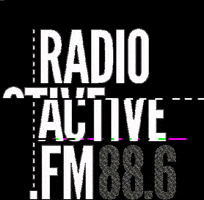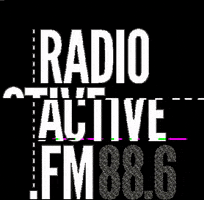
Nuclear Testing Chronology: 1970's
1971
All that was theoretically left now in order for the people to return was for the atoll to be rehabilitated, but this effort proceeded slowly. The second phase of the rehabilitation encountered serious problems because the U.S. government withdrew their military personnel and equipment. They also brought to an end the weekly air service that had been operating between Kwajalein Atoll and Bikini Atoll. The construction and agricultural projects suffered because of the sporadic shipping schedules and the lack of air service.
1972
October - The planting of the coconut trees was finally completed. During this period it was discovered that as the coconut crabs grew older on Bikini Island they ate their sloughed-off shells. Those shells contained high levels of radioactivity, hence, the AEC announced that the crabs were still radioactive and could be eaten only in limited numbers. The conflicting information on the radiological contamination of Bikini supplied by the AEC caused the Bikini Council to vote not to return to Bikini at the time previously scheduled by American officials. The Council, however, stated that it would not prevent individuals from making independent decisions to return.
Three extended Bikinian families, their desire to return to Bikini being great enough to outweigh the alleged radiological dangers, moved back to Bikini Island and into the newly constructed cement houses. They were accompanied by approximately 50 Marshallese workers who were involved in the construction and maintenance of the buildings.
November - John Anjain's son, Lekoj, who was one year old when exposed to fallout on Rongelap in 1954, dies of leukemia at the National Cancer Institute in Bethesda, Maryland.
1973
AEC draft report, not publicly released, concludes that Bravo fallout may have contaminated as many as 18 atolls and islands, including Kwajalein and Majuro.
1975
June - During regular monitoring at Bikini, radiological tests show "higher levels of radioactivity than originally thought" and it "appears to be hotter or questionable as to safety," states a Department of Interior official.
August - AEC surveys suggest some Bikini ground wells are too radioactive for safe use, and that the consumption of pandanus, breadfruit and coconut crabs needs to be prohibited. Medical tests of urine samples from the 100 people living on Bikini detected the presence of low levels of plutonium 239 and 240. Robert Conard of Brookhaven Laboratories commented that these readings were "probably not radiologically significant."
October - The Bikinians file suit in U.S. federal court demanding a complete scientific survey of Bikini and other northern Marshall Islands be conducted.

Lekoj Anjain of Rongelap at NCI in Bethesda, MD. Lekoj was one year old at the time of "Bravo" [in 1954] and died of leukemia at the age of nineteen, shortly after this photo was taken.
1976
July - The U.S. Congress approves $20 million and military logistic support for a nuclear cleanup of Enewetak Atoll [see below]. A Brookhaven National Laboratory report on Rongelap shows that 20 of 29, or 69 percent of the Rongelap children who were under 10 years old in 1954 have developed thyroid tumors. The people of Utrik, whose original exposure in 1954 of 14 rads of radiation was less than one-twelfth that of Rongelap, suddenly show a higher rate of thyroid cancer than the Rongelap people, indicating the long latency period before health problems develop from low level radiation exposure.
For more information about the 3,000 people who cleaned up Enewetak and worked on the Runit Tomb, please go here: https://www.naav.com/ and here: https://www.theatlantic.com/video/index/590299/atomic-soldiers/ and here: https://www.revealnews.org/article/us-veterans-in-secretive-nuclear-tests-still-fighting-for-recognition/ and here: https://www.atomiccleanupvets.com/
and here: https://www.congress.gov/bill/116th-congress/house-bill/1628
1977
May - The nuclear cleanup at Enewetak Atoll begins. About 700 U.S. Army personnel carry out the cleanup's first phase [and 3,000 people worked on the clean-up in total], which includes scraping and collecting 100,000 cubic yards of radioactive soil and debris, and 125,000 cubic yards of uncontaminated debris and dumping it in a bomb crater on Runit Island to be sealed with a cap of cement.
June - A Department of Energy study reports: "All living patterns involving Bikini Island exceed Federal (radiation) guidelines for 30 year population doses." About 100 Bikinians continue living on Bikini. The U.S. Congress approves about $1 million in compensation for Rongelap and Utrik ($100,000 each goes to the Rongelap, Utrik and Bikini for building community facilities; $1,000 each to the 157 exposed Utrik people; and from $25,000 for people with thyroid tumors to Q00,000 for people the families of those who have died).








This 40-minute video about the Runit Dome [aka the "Tomb"] was produced by ABC-TV [Australia] in 2017

Watch this well-done ABC-Australia video about the Radioactive
Dome [aka The Tomb] on Enewetak Atoll in the Marshall Islands
UPDATE!
While the world has been watching the nasty and dangerous "Tomb" on Runit, it has been known that the REAL radioactive threat at Enewetak is not the "Tomb," but rather the tons of radioactive topsoil bulldozed into the lagoon during the 1970s "clean up" operation at Enewetak utilizing four thousand men - aka "atomic veterans" who were exposed to radiation during the operation. Go here for an astute article in the N.Y. Times by renowned law professor Michael Gerrard, who visited the "Tomb" in 2010: https://www.nytimes.com/2014/12/04/opinion/a-pacific-isle-radioactive-and-forgotten.html
1978
May - Interior Department officials describe the 75 percent increase in radioactive cesium found in the Bikini people as "incredible." Plans are announced to move the people within 90 days.
August - A Department of Energy survey of the northern Marshall Islands reveals that in addition to Bikini, Enewetak, Rongelap and Utrik, 10 other atolls or islands "received intermediate range fallout from one or more of the megaton range tests." These included inhabited atolls and islands of Ailuk, Likiep, Mejit, Ujelang and Wotho.
September - The 139 people living on Bikini Atoll are evacuated by U.S. officials. The U.S. government funds a $6 million trust for the Bikini people.





